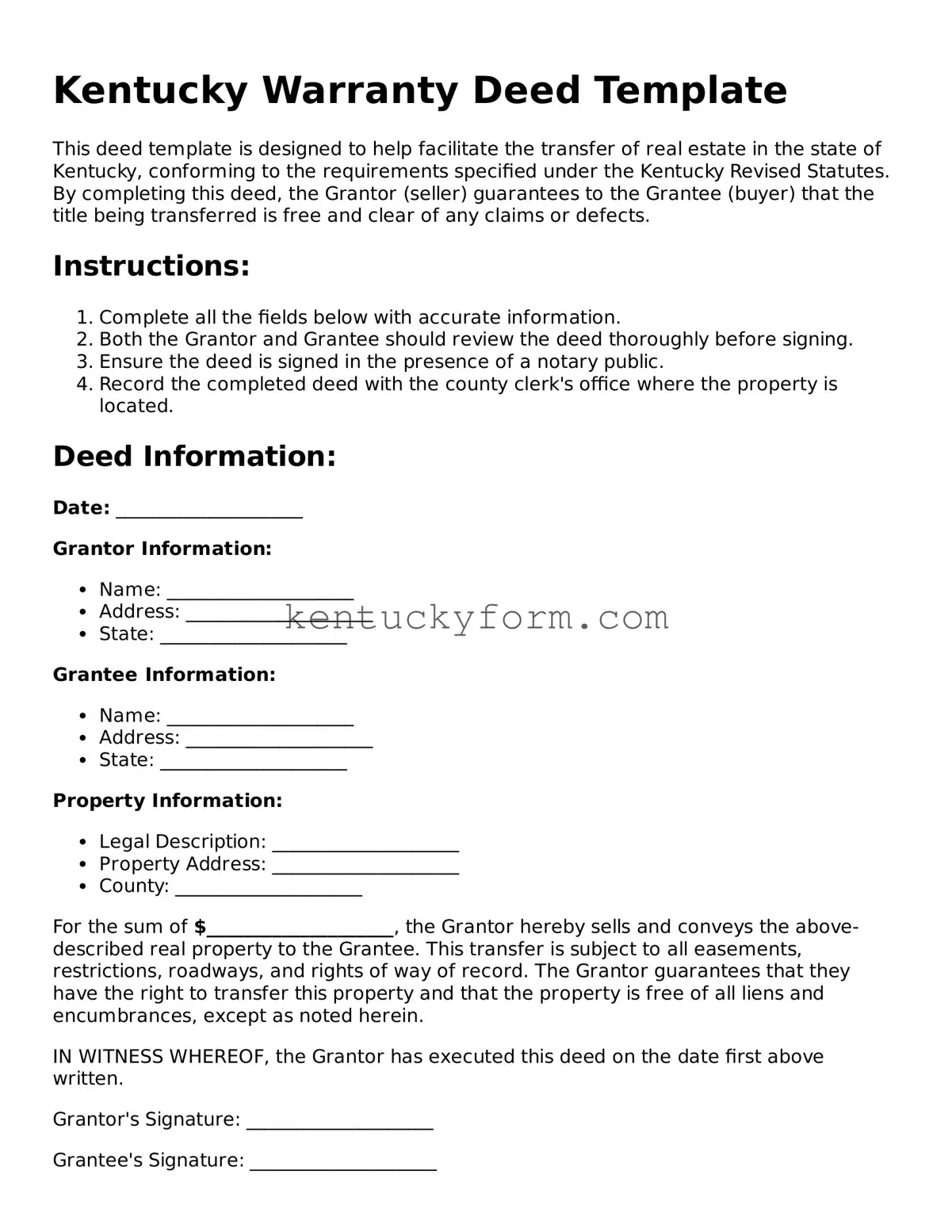Kentucky Warranty Deed Template
This deed template is designed to help facilitate the transfer of real estate in the state of Kentucky, conforming to the requirements specified under the Kentucky Revised Statutes. By completing this deed, the Grantor (seller) guarantees to the Grantee (buyer) that the title being transferred is free and clear of any claims or defects.
Instructions:
- Complete all the fields below with accurate information.
- Both the Grantor and Grantee should review the deed thoroughly before signing.
- Ensure the deed is signed in the presence of a notary public.
- Record the completed deed with the county clerk's office where the property is located.
Deed Information:
Date: ____________________
Grantor Information:
- Name: ____________________
- Address: ____________________
- State: ____________________
Grantee Information:
- Name: ____________________
- Address: ____________________
- State: ____________________
Property Information:
- Legal Description: ____________________
- Property Address: ____________________
- County: ____________________
For the sum of $____________________, the Grantor hereby sells and conveys the above-described real property to the Grantee. This transfer is subject to all easements, restrictions, roadways, and rights of way of record. The Grantor guarantees that they have the right to transfer this property and that the property is free of all liens and encumbrances, except as noted herein.
IN WITNESS WHEREOF, the Grantor has executed this deed on the date first above written.
Grantor's Signature: ____________________
Grantee's Signature: ____________________
State of Kentucky
County of ____________________
On this day, before me personally appeared ____________________, known to me (or satisfactorily proven) to be the person(s) whose name(s) is/are subscribed to the within instrument and acknowledged that they executed the same for the purposes therein contained.
In witness whereof, I hereunto set my hand and official seal.
Notary Public: ____________________
My Commission Expires: ____________________
